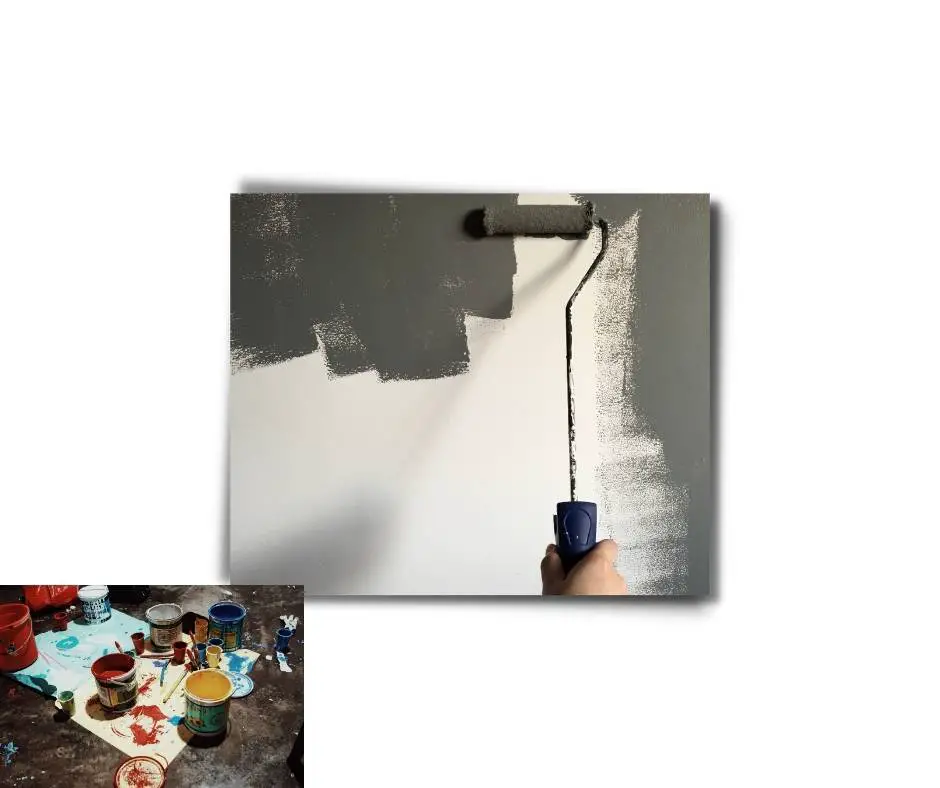Have you ever tried to paint a room, but the paint just wouldn’t stick to the wall? You might have been using emulsion paint. Emulsion paint is designed to be thin and easy to spread, but this can also make it difficult to adhere to walls and other surfaces. In this blog post, we’ll explore some of the reasons why emulsion paint might not be sticking, and we’ll provide tips on how you can improve its adherence. Let’s get started!

Why emulsion paint might not be sticking
Emulsion paint is a popular choice for walls, ceilings, and other surfaces in the home. It is typically used for interior applications and provides smooth, even finishes. Emulsion paint is a common choice because of its durability and the variety of finishes it provides.
However, emulsion paint can sometimes have trouble sticking to walls, resulting in an uneven or patchy appearance. This problem can happen when you paint your home’s trim. There are several reasons why this might happen. The following can be the reasons for your emulsion paints not sticking to the surface:
- Dirty Surface
- Too thinly painted
- Previously oil-based paint
- Not using a proper primer
- Inappropriate Temperature
Dirty Surface: Emulsion paint needs a clean, dry surface to provide better adhesion. So make sure there is no dust, dirt, or grease on the wall before painting to get better adhesion.
Homeowners like to use emulsion paint in high-condensation areas such as bathrooms and kitchens, where the walls usually get dirty. Unfortunately, the paint doesn’t adhere better on those walls with dirt and grime on the surface.
Too thinly painted: Another possible reason is that you applied the paint too thinly on the wall to stick to. You should apply two or three thin coats in order to achieve an even finish. If you apply only one thick coat, the paint may not have enough time to dry properly and will not adhere to the wall properly.
Previously oil-based paint: If your home is old enough, it is highly possible to be painted with oil-based paint. And you know that you can use emulsion paint on previously painted walls. But emulsion paint, a water-based paint, will not stick to the surface with oil-based paint on it. So, ensure you are not using emulsion paint on the oil-based paint.
Not using a proper primer: Is there any possibility that you have heard that you can use emulsion paint on the wall without any primer? Yes, you can do that. But if you are having issues with your paint not sticking to the wall, make sure you go for placing a primer first, then paint. Without a proper primer, you will have a hard time with your paint for it to stick to the wall.
Inappropriate Temperature: Experts suggest that the ideal temperature for painting your wall is above 50 degrees Fahrenheit. If you intend to paint your wall when the weather is too cold, it can affect the adhesion of the paint. In addition, cold weather will not allow the paint to dry soon as it will add moisture to the surface. And that’s why it is highly likely that the paint will peel off the surface.
How to fix the problem

If your wall has dirt and grime on it, wash it with something like TSP before painting. You can also use dish soap and water to clean the surface to help the paint adhere better. I prefer using cleaners that are not oil-based because the oil will create a further problem for the paint’s adhesion to the surface.
You should apply two or three coats of emulsion paint on the wall to get a perfect finish on the walls. Avoid using only one thick coat of paint on the wall, as it will take a long time to dry, and you will get an uneven finish on the wall. Moreover, one thick coat will provide less adhesion and will chip easily.
If you have a wall previously painted with oil-based paint, you can scrub the paint off using sandpaper. Another easy solution to the problem is using an oil-based primer as emulsion will stick to the oil-based primer well.
Using a proper primer will solve almost all the above problems but weather. So make sure to use a perfect primer on the wall before applying paint. A better primer will help your paint stick to the surface and give you an even finish.
Primer also removes stains and imperfections on the walls. A primer also fills in the crevices and cracks, if there are any, on the surface. So, a primer will help your paint stick to the surface and provide a nice-looking glossy finish.
If you are still having trouble getting your emulsion paint to stick, you should consult a professional painter or home improvement specialist to troubleshoot the problem and find a solution.
The Bottom Line
The solution to all the above-stated problems is that you can solve them using a proper primer. However, before that, you need to clean the walls. If the walls have dirt and grime, you will have difficulty with your emulsion paint.
One thing you can do for temperature is to wait for summer. As emulsion paint is an interior paint, you can control the temperature inside your home. If it is too cold, the central heater can be a solution to this problem.

S. Pushon is a paint expert, self-taught artist, and currently working as an adviser in the paint industry as a Quality Improvement and Development Assistant.
An artist by heart, he draws remarkable art pieces and as a professional paint industry individual, he seeks the insight and shares with enthusiasts. Read more…

